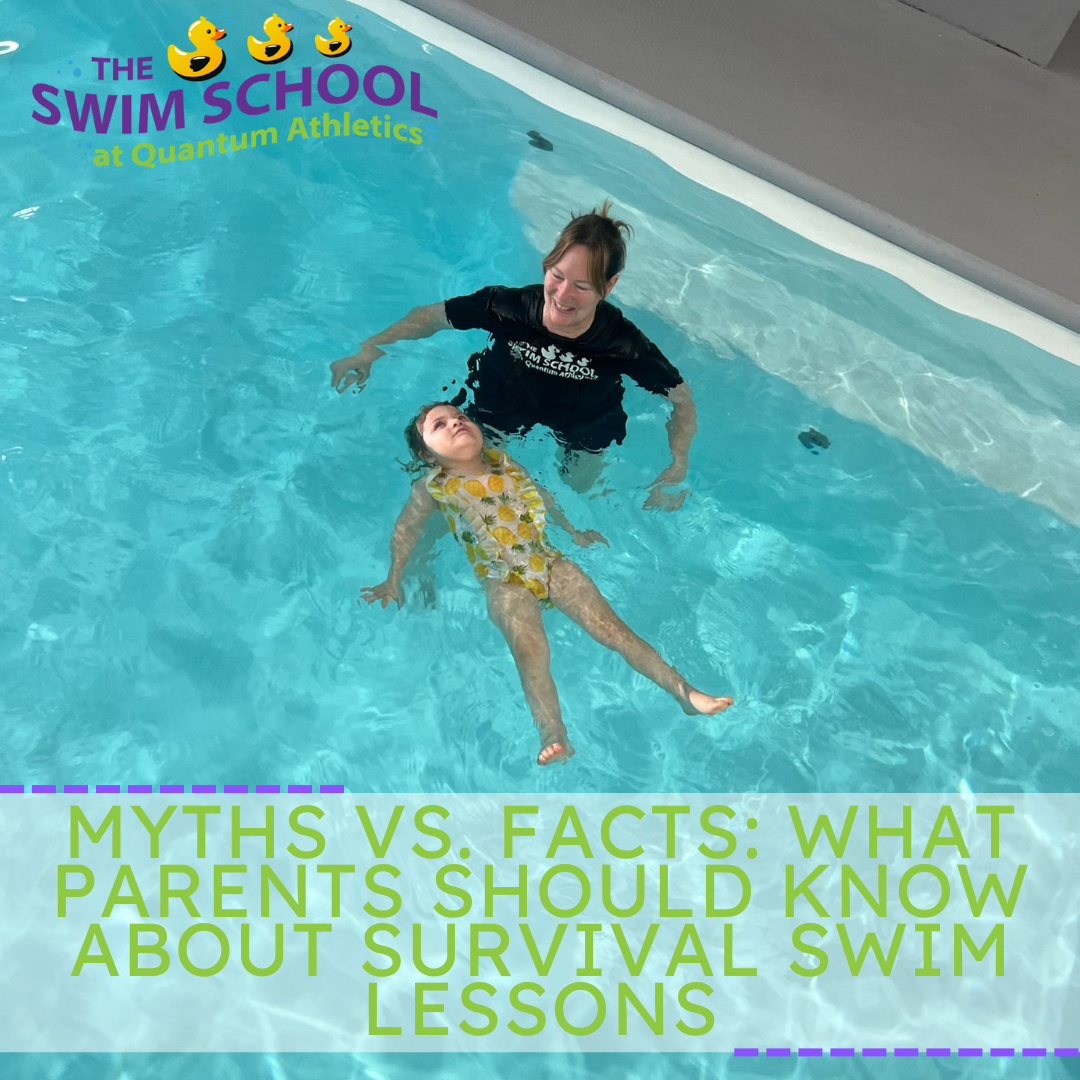💦 Myths vs. Facts: What Parents Should Know About Survival Swim Lessons
When it comes to swimming, one of the most important — and sometimes misunderstood — types of instruction is survival swim lessons. Parents often hear mixed messages about what these lessons involve, how intense they are, and what age children should start.
Let’s separate myth from fact so you can feel confident making the best choice for your child’s safety and development.
🫧 Myth #1: Survival swim lessons are too intense for young children.
Fact: Survival swim lessons are designed to be age-appropriate and nurturing.
Certified instructors are trained to work with infants and toddlers in calm, supportive ways — never through fear or force. Lessons focus on trust, comfort, and repetition so that each child progresses at their own pace.
Instructors read a child’s cues, provide breaks as needed, and make the learning experience positive. It may look like hard work, but it’s really guided skill-building through gentle practice.
🧸 Myth #2: My child is too young for survival swim lessons.
Fact: Children as young as 1 can begin learning vital water safety skills!
While it’s never “too late” to start, early exposure helps children develop instinctive responses in the water — like rolling over to float and breathe.
For infants and toddlers, lessons are short, customized, and focus on comfort, floating, and self-rescue. The goal isn’t swimming laps — it’s survival readiness.
🌊 Myth #3: Survival swim is just about floating.
Fact: Floating is only one part of a larger survival system.
Children learn to float as a way to rest and breathe, but they also practice breath control, orientation, and movement toward safety.
These skills combine to give a child the ability to stay calm and react effectively if they ever find themselves in the water unexpectedly. It’s not just floating — it’s thinking and surviving in the water.
💙 Myth #4: My child will remember what to do forever after one session.
Fact: Like any learned skill, survival swim requires refreshers.
As children grow and their bodies change, so does their buoyancy, balance, and coordination. Weekly Maintenance lessons help keep skills sharp and instinctive — just like practicing bike riding or crossing the street safely.
🌟 The Bottom Line
Survival swim lessons aren’t about pressure or perfection — they’re about peace of mind.
They empower children with real-life safety skills while building water confidence, body awareness, and resilience.
With caring instruction and consistent practice, even the smallest swimmers can learn the skills that save lives.
Ready to give your child the confidence to be safe in and around water?
Join our next session of survival swim lessons and see how powerful early water education can be. 🌊💪

